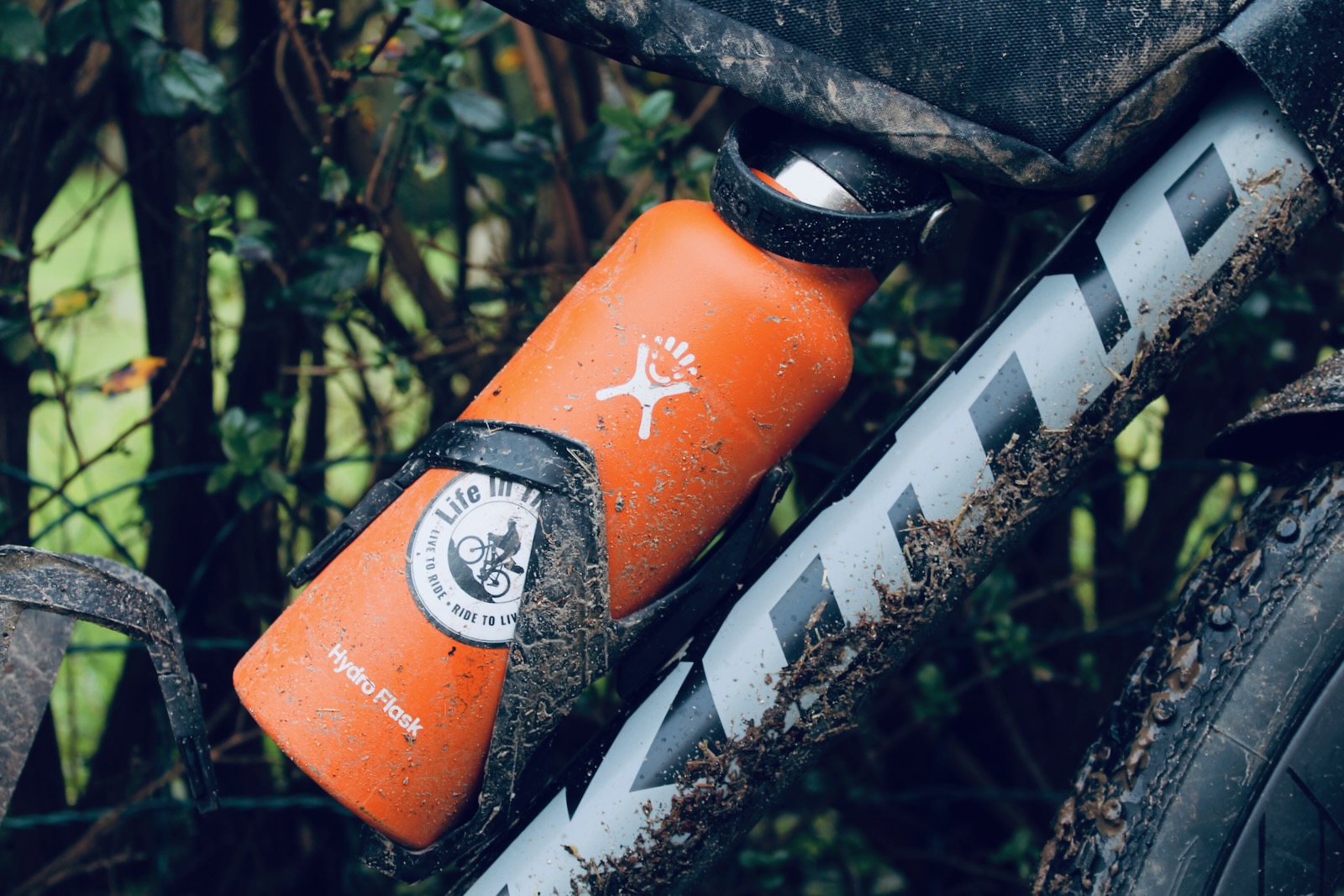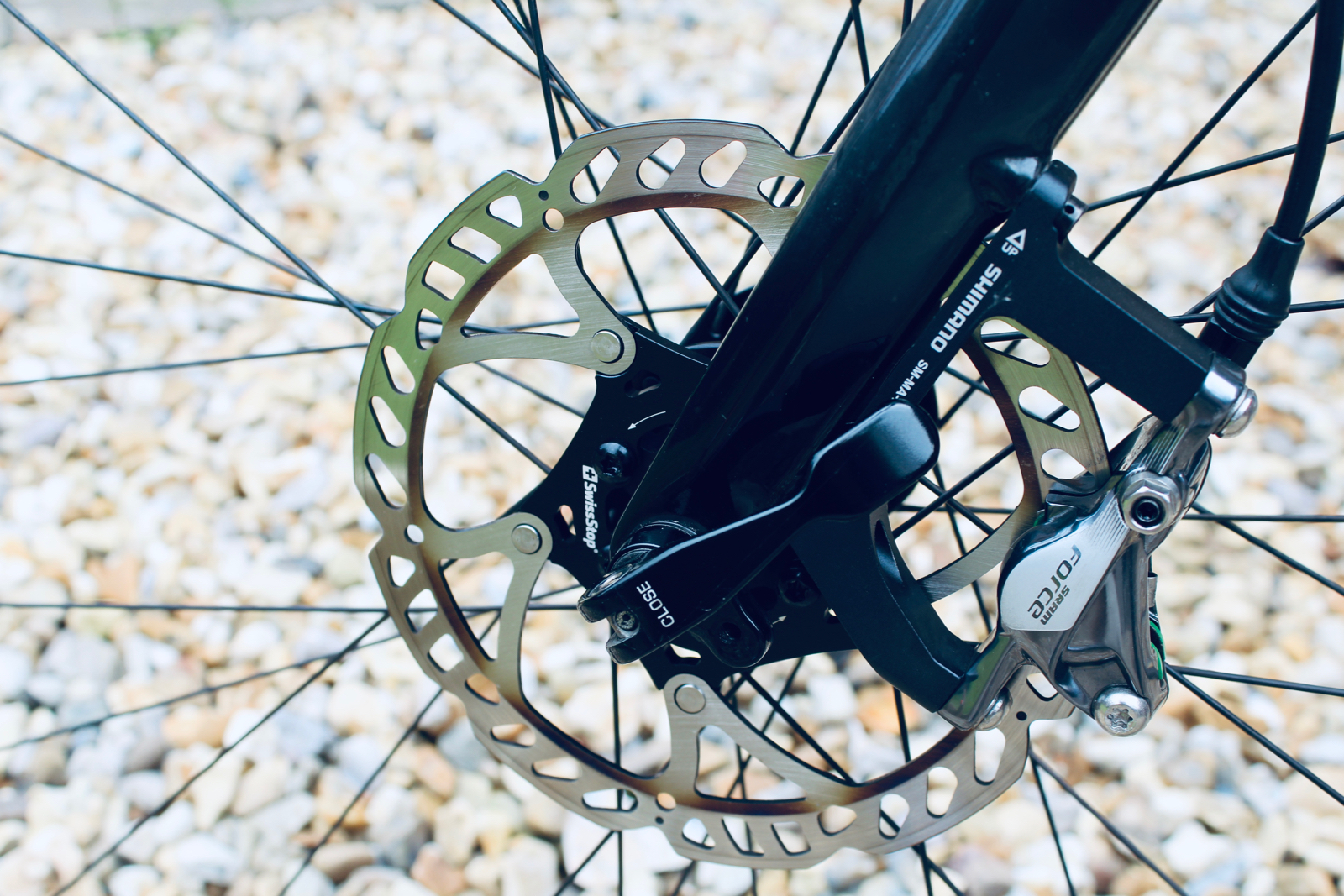Should We Use Stainless Steel Bicycle Water Bottles?
We typically give little thought to the negative effects that the classic plastic cycling 'bidon' might have on the environment, planet, and our personal health. But perhaps we should…
A plastic bicycle bottle is found on almost every cyclist's frame. Whilst most amateurs will at least use their water bottle more than once (many professionals treat them as single use!), this plastic vessel is far from a sustainable or healthy option.
Let's consider some of the squeezable plastic bottle's downfalls:
1) Non-Recyclable – The majority of (reusable) plastic bicycle bottles are not very easily recycled. Unlike single use PET water bottles, reusable plastic sports bottles can be made of a variety of different plastics, and whether they are recycled depends on how advance your local waste collection service is.
You can find out what your bottle is made from by looking at the recyclable symbol on the base; the number inside the triangle indicates what the bottle material is, and your local waste collection facility will be able to tell you if they can recycle it. The unfortunate reality is that identifying the bottle plastic type takes some time and effort, and although minimal, this can discourage either the end user or the recycling plant from checking and correctly recycling the product.
2) Non-Biodegradable – If they end up in landfill, most plastic bottles will take decades to degrade in natural surroundings, and though new plant based bottles (normally made from a high percentage of sugar cane) will biodegrade, it normally needs to be at commercial composting temperatures with specific microbes at work.
3) Leaching – All plastic bicycle bottles 'leach' to some degree. This is almost as disgusting as it sounds; it refers to the contamination of the contents by the chemicals used in the plastic production, and it is what gives water kept in plastic water bottles that tainted taste, particularly in hot conditions.
The more concerning thing with leaching is that these chemicals can be a hazard to our health. Most of us know to look for bottles that are free of BPA and 'Heavy Metals', but lots of plastics still contain Bisphenol-S (BPS) or Bisphenol-F (PSF), which are similar to BPA and carry many of the same potential risks.
4) Migration – Not only does the taste of the plastic chemicals affect the liquid content of a plastic bottle, but if you use the bottle with flavoured drinks then you will also find that the flavour of the drink 'migrates' into the plastic, which can lead to subsequent drinks tasting of their predecessor.
5) Hygiene – The mouthpiece on plastic bike bottles is a breeding ground for bacteria, and it is very difficult to properly clean because of the enclosed rubber stopper. Some brands have invented clever solutions that improve the ability to clean saliva and old drink residue from the stopper, but I have yet to find a perfect solution.
The above five points clearly highlight that plastic water bottles are far from perfect. They are bad for the environment, and potentially hazardous to your health.
So, what is the solution?
I have been testing out a variety of stainless steel water bottles to try and find the best solution for cycling. I chose stainless steel water bottles that would fit into a standard bicycle bottle cage, and focussed on those that had a 'sports cap' – with a spout or straw, so you don't have to lift the bottle to drink (don't take your eyes off the road!)
This is the best option I have found to date…
Review – Hydro Flask 18oz (532ml) Stainless Steel Insulated Water Bottle with Straw Cap
I am an avid Hydro Flask fan, and their wide top coffee sip flask comes with me on many rides; so, it seemed logical to look to the Hydro Flask range for a stainless steel insulated sports bottle too.
The Hydro Flask 18oz (532ml) Standard Mouth Water Bottle pairs up with their Straw Cap, which I found to be a good option for one handed drinking on the go.
The HydroFlask is made from BPA and Phthalate-free 18/8 Pro-Grade Stainless Steel, with TempShield™ insulation providing cold insulation for up to 24 hours, and hot insulation up to 12 hours.
What are the advantages of this stainless water bottle over your classic plastic bike bottle?
Better for you and better for the planet – I am a convert to stainless steel bicycle water bottles.
The Hydro Flask 18oz (532ml) Standard Mouth Water Bottle pairs up with their Straw Cap, which I found to be a good option for one handed drinking on the go.
The HydroFlask is made from BPA and Phthalate-free 18/8 Pro-Grade Stainless Steel, with TempShield™ insulation providing cold insulation for up to 24 hours, and hot insulation up to 12 hours.
What are the advantages of this stainless water bottle over your classic plastic bike bottle?
- Lifetime Use – if you don't lose it, this bottle should last you a lifetime, and it is also backed by a lifetime guarantee.
- No Taste – no matter how long you leave water in the bottle on a hot summer day, there is no risk that the contents will begin to taste plasticky and chemically; it will keep that super clean taste.
- Hot or Cold – you can use this with hot or cold drinks, a particular advantage in the freezing months of winter, when a warm drink can be a great comfort.
- Hygienic – the straw design is far more easily cleaned than a traditional sports bottle cap, so you can sterilise the bottle after use.
- Easy to Use – Once you have got the hang of it, it is quite simple to flip open the straw with one hand, and then slurp away without needing to tilt the bottle, so you can keep your eyes on the road.
Better for you and better for the planet – I am a convert to stainless steel bicycle water bottles.
.jpeg)
.jpeg)





Comments
Post a Comment